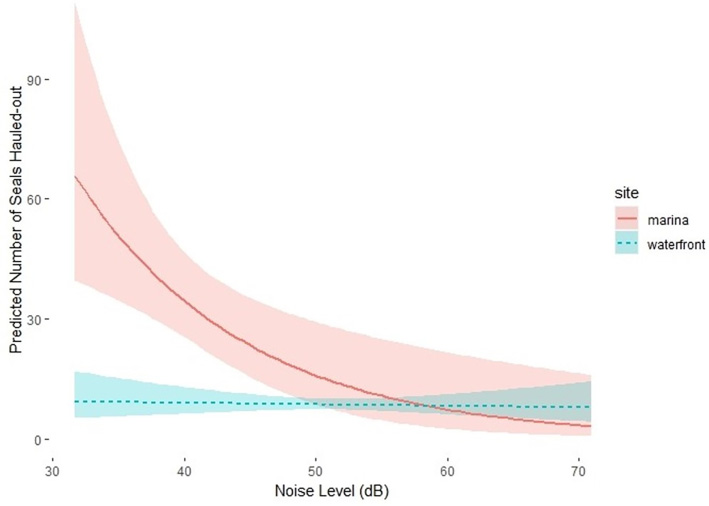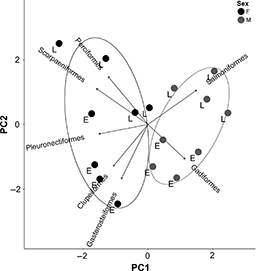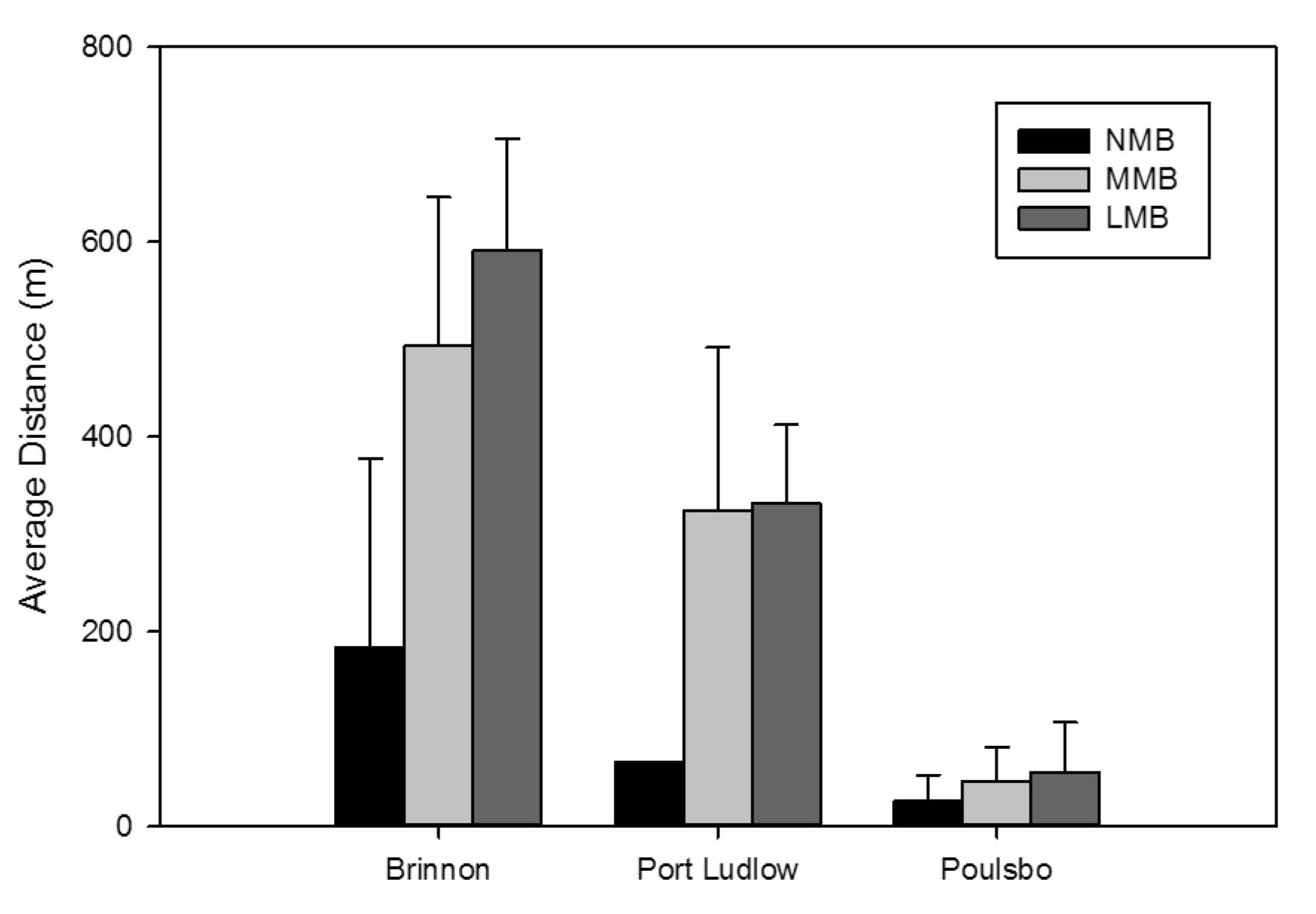Publications
Graphical abstracts of selected papers
In this page you can review graphical abstracts from selected papers authored or co-authored by members of the Marine Mammal Ecology Lab . Clicking on the figure will open a new window with the pdf file of the paper or, due to copyright, a link to it. You can read all the pee-reviewed papers by using the drop-down menu of the Publications tab in the top menu.
Papers with no student authors
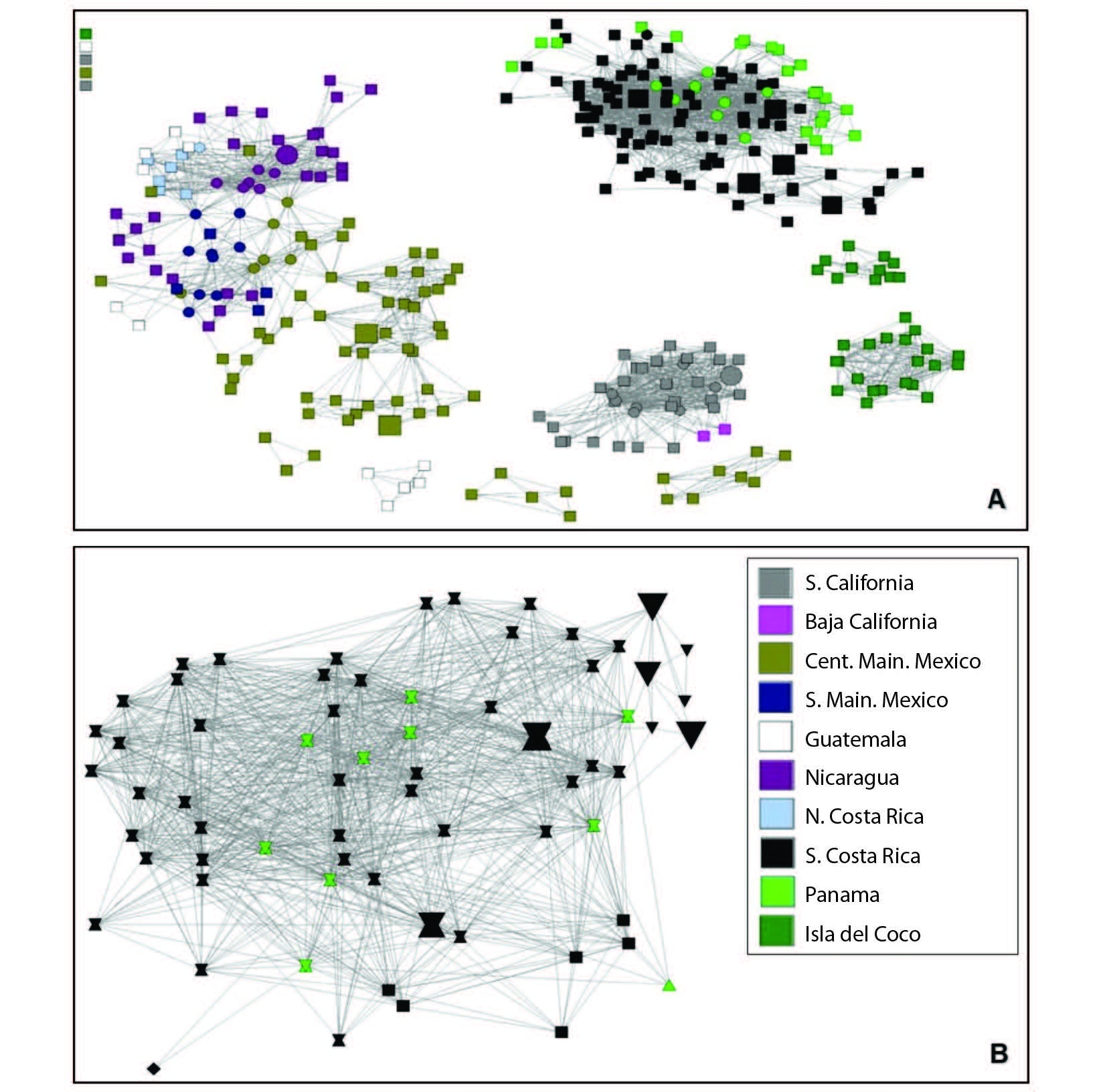
Social network of false killer whales (Pseudorca crassidens). Individuals presented as nodes and lines between nodes indicating individuals encountered in the same area on the same day, restricted to individuals with acceptable quality and distinctiveness scores. (From Douglas et al. 2023 Rev Biol Trop)
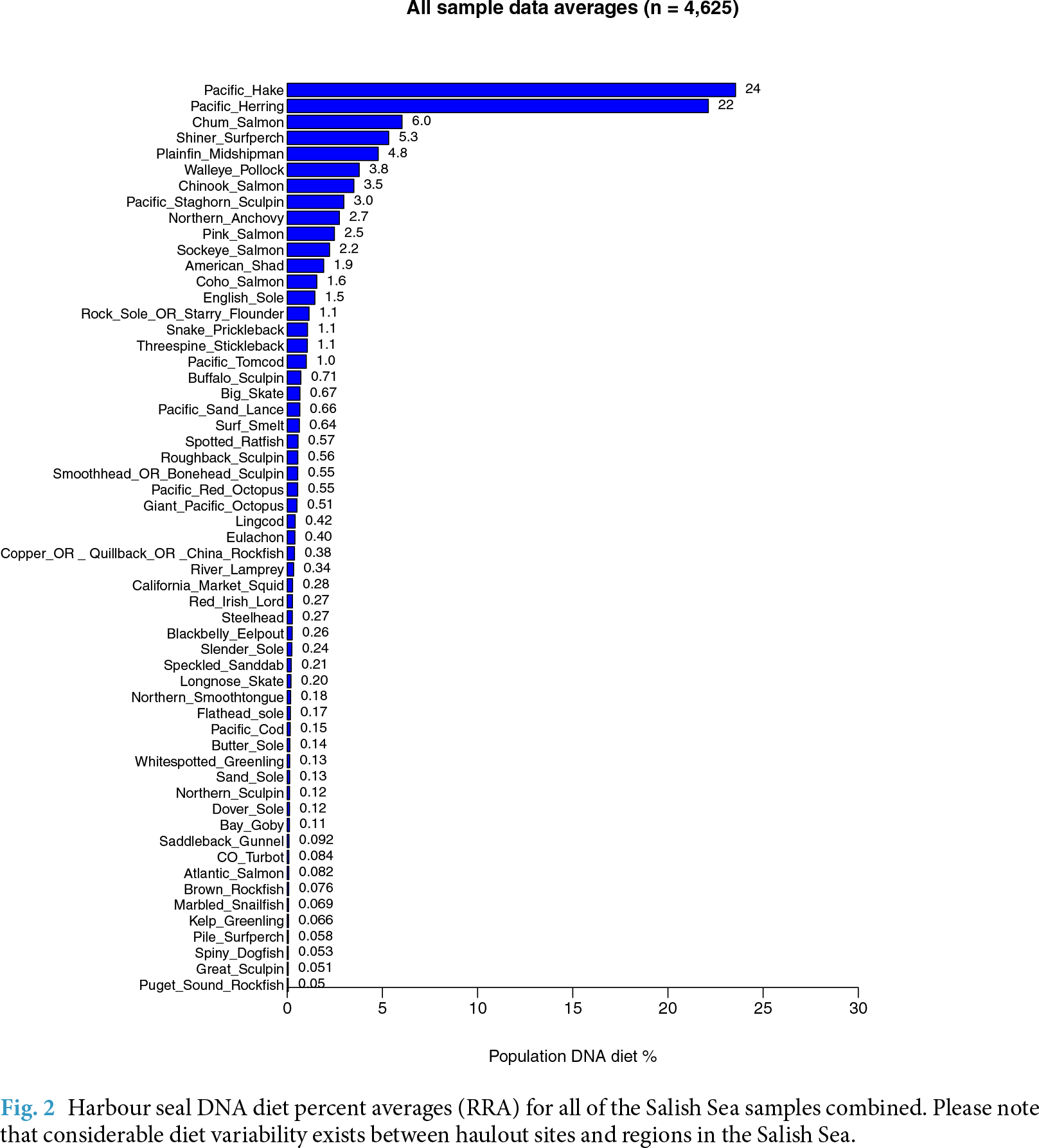
Harbour seal DNA diet percent averages (RRA) for all of the Salish Sea samples combined. Please note that considerable diet variability exists between haulout sites and regions in the Salish Sea. (From Thomas et al. 2022 Sci Data)
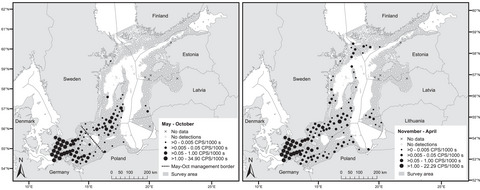
Mean acoustic detection rates of harbor porpoises in the Baltic Sea. One of the largest ever passive acoustic monitoring studies has been carried out by eight Baltic Sea nations to estimate the abundance of the critically endangered Baltic Proper harbour porpoise for the first time. (From Amundin et al. 2022 Ecol Evol)
Papers by graduate students
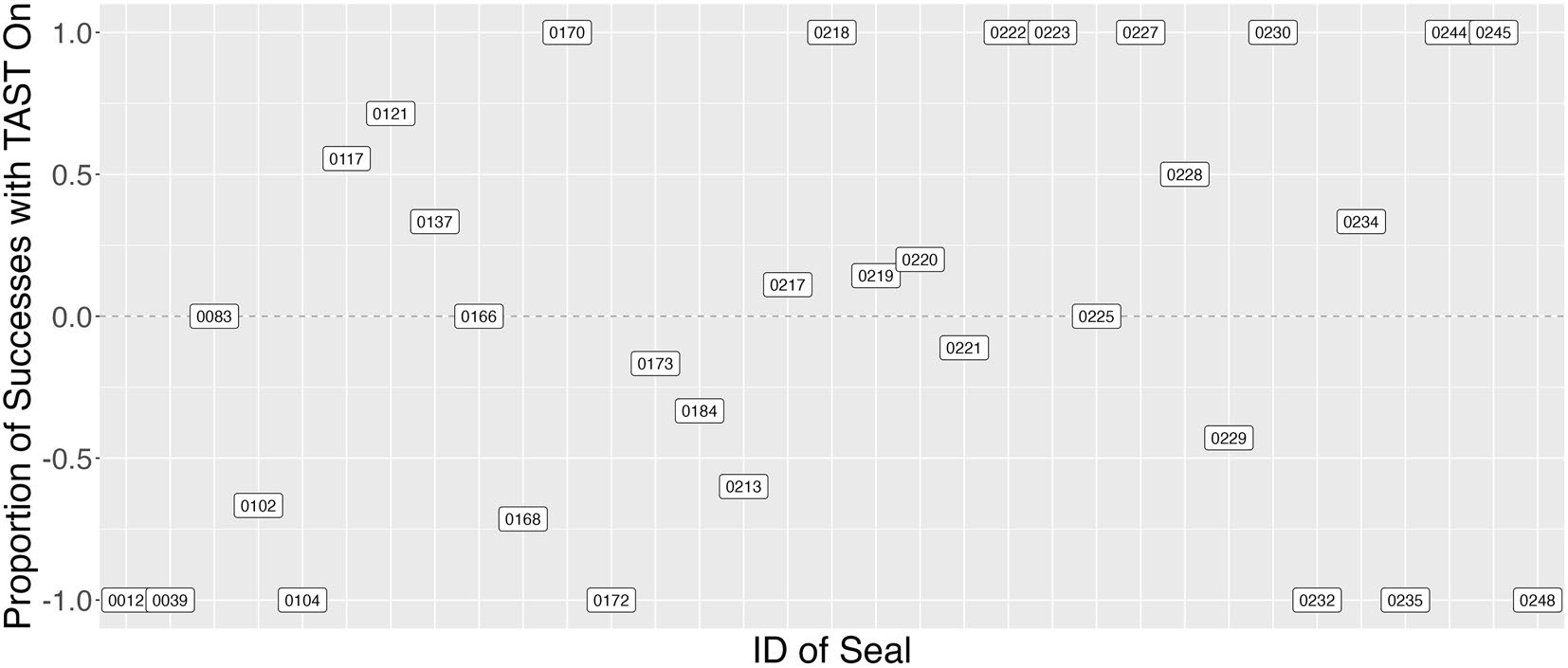
The proportion of successful predation events under sound exposure conditions (TAST-on) for individual seals present under both TAST treatments (n = 33) in fall 2020. Positive values indicate a greater proportion of salmon consumed during sound exposure conditions, with a value of + 1.0 indicating a seal was observed consuming salmon only when TAST was on. (From McKeegan et al. 2024 Sci Rep)
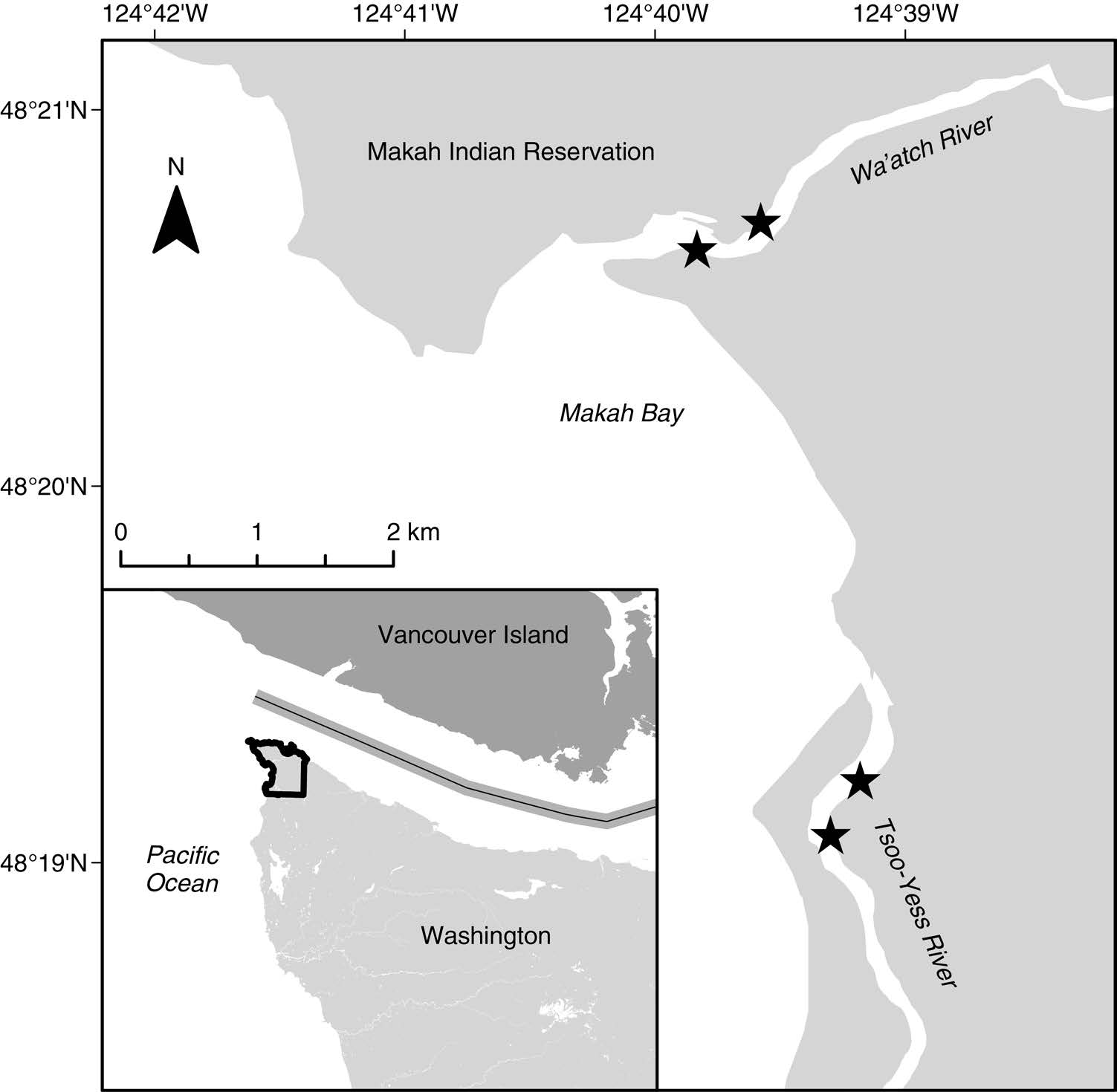
Map of the study site. Stars indicate where samples of scat from North American river otters (Lontra canadensis) were collected. (From Buzzell et al. 2023 Fish Bull)
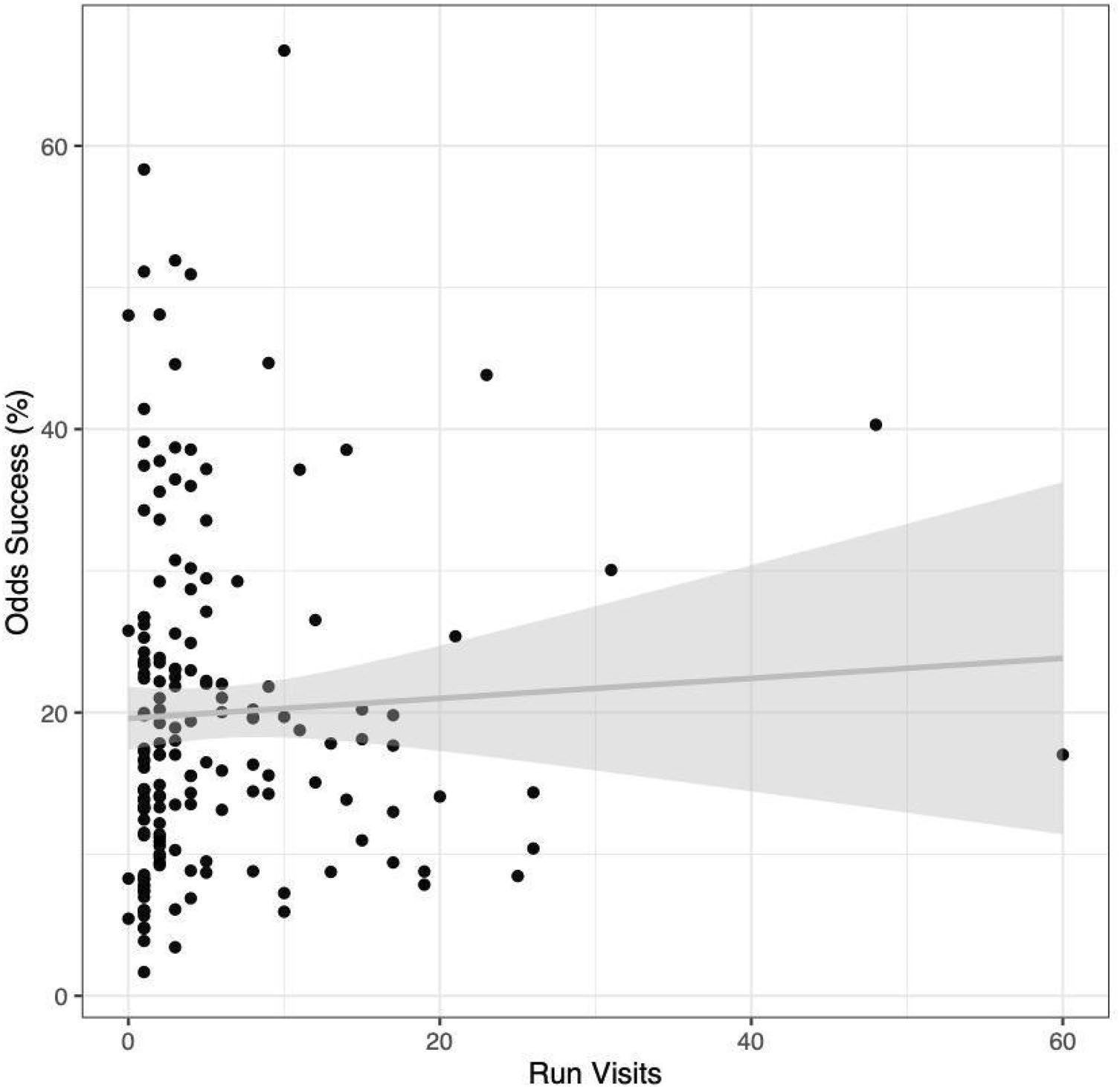
Odds of individual harbor seal foraging success relative to visits to Whatcom Creek during salmon runs. There was no relationship between the odds of a successful foraging attempt for each of the 170 individual harbor seals and the number of times that they visited the creek. (From Freeman et al. 2022 Sci Rep)
